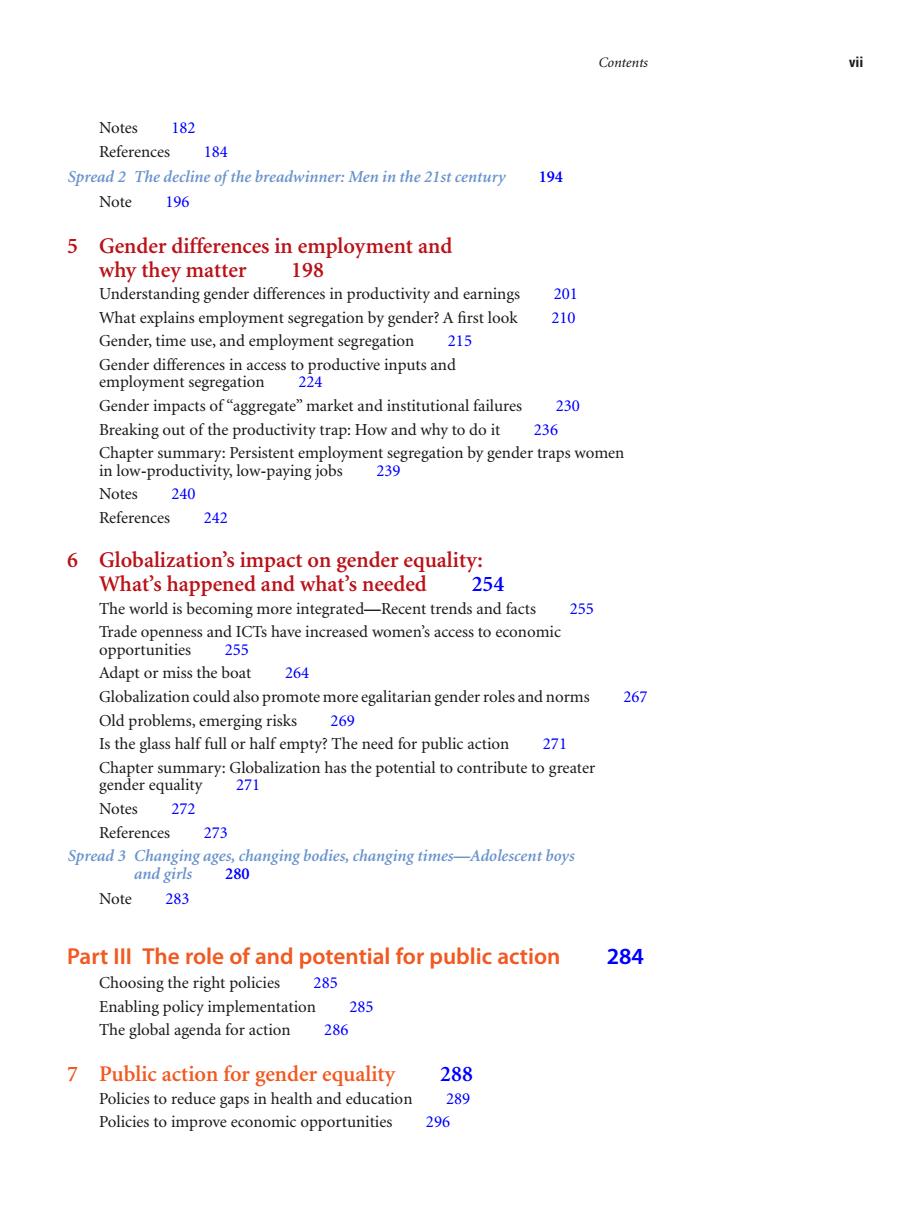正在加载图片...

Contents vii Notes 182 References 184 Spread 2 The decline of the breadwinner:Men in the 21st century 194 Note 196 5 Gender differences in employment and why they matter 198 Understanding gender differences in productivity and earnings 201 What explains employment segregation by gender?A first look 210 Gender,time use,and employment segregation 215 Gender differences in access to productive inputs and employment segregation 224 Gender impacts of "aggregate"market and institutional failures 230 Breaking out of the productivity trap:How and why to do it 236 Chapter summary:Persistent employment segregation by gender traps women in low-productivity,low-paying jobs 239 Notes 240 References 242 6 Globalization's impact on gender equality: What's happened and what's needed 254 The world is becoming more integrated-Recent trends and facts 255 Trade openness and ICTs have increased women's access to economic opportunities 255 Adapt or miss the boat 264 Globalization could also promote more egalitarian gender roles and norms 267 Old problems,emerging risks 269 Is the glass half full or half empty?The need for public action 271 Chapter summary:Globalization has the potential to contribute to greater gender equality 271 Notes 272 References 273 Spread 3 Changing ages,changing bodies,changing times-Adolescent boys and girls 280 Note 283 Part Ill The role of and potential for public action 284 Choosing the right policies 285 Enabling policy implementation 285 The global agenda for action 286 7 Public action for gender equality 288 Policies to reduce gaps in health and education 289 Policies to improve economic opportunities 296Contents vii Notes 182 References 184 Spread 2 The decline of the breadwinner: Men in the 21st century 194 Note 196 5 Gender differences in employment and why they matter 198 Understanding gender differences in productivity and earnings 201 What explains employment segregation by gender? A fi rst look 210 Gender, time use, and employment segregation 215 Gender differences in access to productive inputs and employment segregation 224 Gender impacts of “aggregate” market and institutional failures 230 Breaking out of the productivity trap: How and why to do it 236 Chapter summary: Persistent employment segregation by gender traps women in low-productivity, low-paying jobs 239 Notes 240 References 242 6 Globalization’s impact on gender equality: What’s happened and what’s needed 254 The world is becoming more integrated—Recent trends and facts 255 Trade openness and ICTs have increased women’s access to economic opportunities 255 Adapt or miss the boat 264 Globalization could also promote more egalitarian gender roles and norms 267 Old problems, emerging risks 269 Is the glass half full or half empty? The need for public action 271 Chapter summary: Globalization has the potential to contribute to greater gender equality 271 Notes 272 References 273 Spread 3 Changing ages, changing bodies, changing times—Adolescent boys and girls 280 Note 283 Part III The role of and potential for public action 284 Choosing the right policies 285 Enabling policy implementation 285 The global agenda for action 286 7 Public action for gender equality 288 Policies to reduce gaps in health and education 289 Policies to improve economic opportunities 296